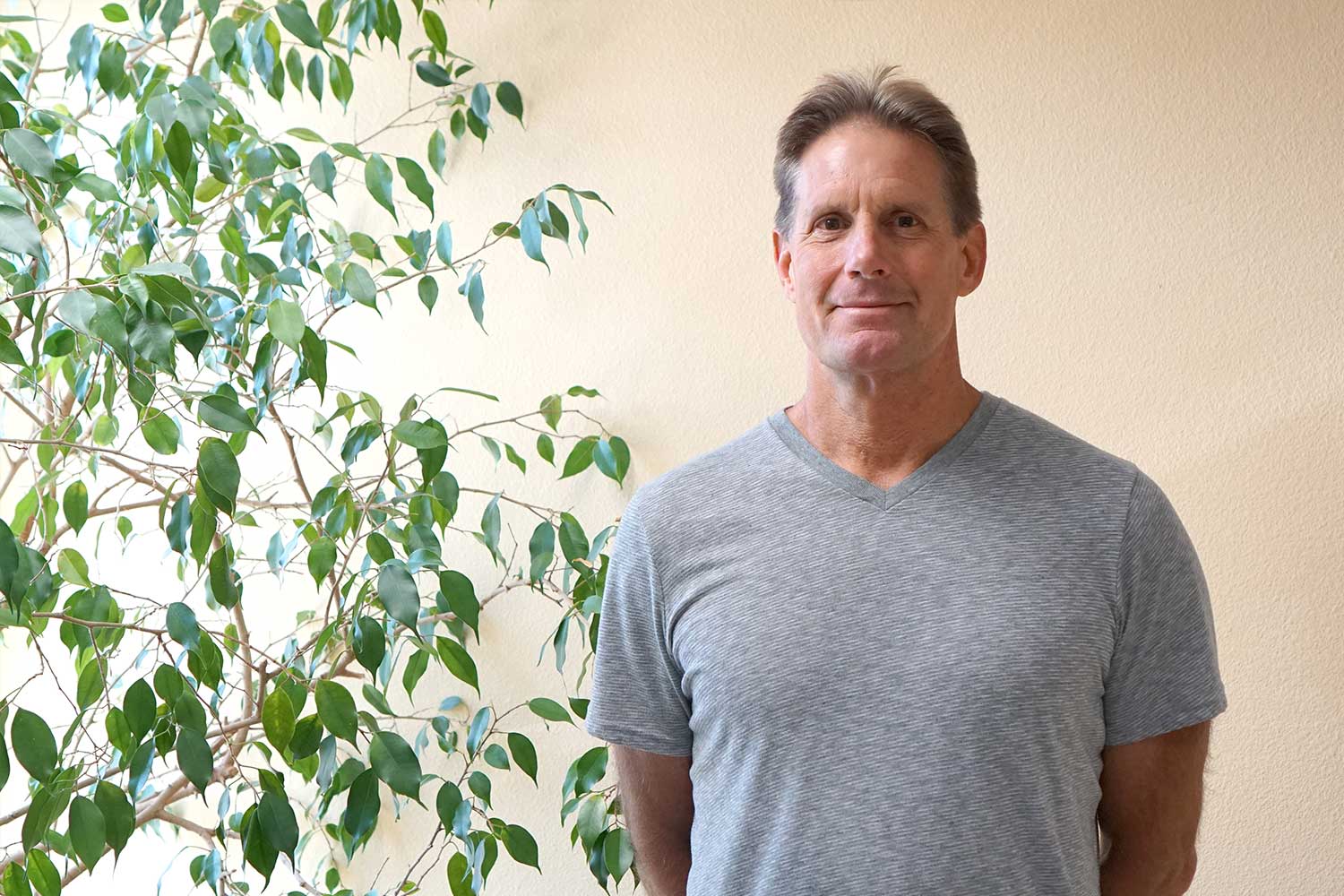At the heart of underwriting nonprofits, Michael tells us, is an internal drive to truly understand the substantial difference nonprofits are making — and to adapt to evolving needs in order to insure those services.
In your experience, what stands out as the main difference in the way NIA approaches writing business compared to other insurers?
I used to work at an insurance company that could decline any account for unusual risks.
Here at NIA, it’s just the opposite. If you want to push to write an account, you can probably do it. But if you want to decline a nonprofit, that declination has to go to a senior manager. If it’s a non-renewal, that account goes to the CEO.
We want to make sure that we’re insuring as many nonprofits as we can and that we’re being consistent. That’s a major shift from the skepticism and conservatism of other insurers.
NIA doesn’t cover a few types of organizations, such as medical centers or organizations that hold individuals against their will. Is this because other insurers are available for these organizations? Are the risks too catastrophic and could result in lawsuits? Or is it a question of values?
We don’t insure nonprofit hospitals and clinics with a material medical practice because we don’t offer medical malpractice insurance.
If a nonprofit has a couple of doctors or nurse practitioners, we can write them as long as the medical professionals have their own insurance for medical malpractice.
For organizations that hold people against their will — we don’t necessarily deny them just because the risks are too catastrophic. Yes, lockdown facilities can result in lawsuits since people are being held against their will.
But there are also new organizations that have cropped up in the past 10 years, like reform schools or boot camps for teenage boys, where we’ve seen really bad practices such as takedown and restraint techniques.
They can be abusive and brutal and result in people saying they were kidnapped held against their will or even maimed or killed.
Also, we specifically insure nonprofits whose goal is to free people held against their will, such as eliminating sex trafficking.
A lot of our members help people who are either abused at work or taken advantage of economically, like being paid super low wages, and rescued from situations that are not considered humanitarian.
Can you give us an example of a nonprofit that would not have been covered by any other insurer but that we decided to cover — and it ended up being a fantastic decision for everyone involved?
Absolutely! There are lots of nonprofits like that.
I had one the other day that kind of touched me. They’re just starting off in Illinois, and they’re funding and managing electrocardiogram tests for high school kids playing sports.
In the last 10 years, we’ve all read in the news that kids are collapsing during football practice due to preexisting heart conditions that were never found.
A lot of insurance companies wouldn’t touch that and would say, “We don’t want anything to do with a test that’s incorrect on a kid with a heart condition.”
We also insure organizations that conduct AIDS testing or pass out needles.
And our general liability loss ratio is excellent. So, if you look at the types of accounts we write, there’ve been so many that other insurance carriers would not cover, or they would charge a lot of money or exclude what the nonprofit needed covered.
When NIA produces an innovative product, how long does it usually take for the rest of the insurance industry to catch up?
Usually a year or so. Larger, for-profit insurers, even though they’re much bigger, are always trying to compete with us and replicate a lot of our coverages.
But when we see a need in the sector, our company is faster to adapt because we’re smaller, more streamlined, and more flexible.
For example, we added coverage so that schools impacted by new laws allowing teachers carry-ons would still have some insurance — and not face complete bankruptcy if someone were injured.
Those schools would have otherwise been excluded from our coverage because of that unfortunate arms exposure in those states.
We never want to see a nonprofit that doesn’t have the coverage it needs to operate. We want to see nonprofits survive, and we’re faster at getting the appropriate coverages in place.
I would say there are some coverages or some ways we do things that no other company does.
For example, full liquor liability coverage is part of our general liability insurance for no additional premium charge. That’s very useful for nonprofits when hosting fundraising events.
Sometimes a nonprofit needs the coverage immediately for an event they’re hosting the next day, and it would be difficult to add a whole new policy in such a short period of time. So we started to just include it so that our members are covered.
When NIA was first founded, there wasn’t much data to show nonprofits were a good risk. There wasn’t much data to show that they were a poor risk either. NIA’s decisions created that data. How did you handle that? How did you decide, “There’s not enough data, so I’m going to take this risk,” or “There’s not enough data, so I’m not going to take this risk?”
We took a positive approach to underwriting nonprofits. In the beginning, we didn’t have a 250-page underwriting manual we’d created to reference. A lot of it was trust in the nonprofits.
Our CEO challenged the inclination of for-profit insurance companies to think that writing nonprofits was bad underwriting and that these nonprofits were a gigantic risk.
We looked at the history of each nonprofit, but a lot of it is intuition. We ultimately couldn’t know if this class of business was going to be good risk or not, but we wanted to trust the nonprofit sector to manage itself well.
Luckily, time proved us right. There’s definitely an art to underwriting nonprofit risks. It’s the intersection of art and business, because nonprofits are doing so many different things that you have to be creative in how you cover them and what accounts to accept.
And then of course there’s a business side. The organization needs a surplus to keep writing more accounts and to be able to return dividends to nonprofits.
But the interesting part of the job is looking at these nonprofits that do amazing things and just thinking, “Wow, I bet other insurers would shy away from this, but we’re going to find a way to do this.”
How much of it is intuition?
Probably about 50%.
And that makes us a lot like our members, because they have a lot of faith in the work that they do, and we have faith in them.
Exactly. And I mean, their operations are also very fluid. A lot of the organizations are changing depending on what’s going on in society, and their programs grow as they add services based on the ongoing needs of the community.
For example, there are nonprofits that provide consultations for people trying to get health insurance after the Affordable Care Act was passed. Nonprofits are really flexible when things change in society.
NIA does the same thing. As a nonprofit ourselves, we’re quick to adapt. We are constantly changing — every week it seems there’s a new nuance to add to our underwriting manual as we become more thorough and detail-orientated and as we understand our members.
It’s nice to see that our company moves along with the nonprofit community and works with members instead of against them. We take stock in the changes going on and adapt to them too.
It’s been great working here all these years, and it’s never dull because of all the changes. The favorite part of my job is looking at nonprofits’ websites and seeing all the great things that nonprofits do.
It’s heartwarming to see services that help underprivileged people or disabled people or really anyone who just needs help that the government doesn’t help enough. That’s my editorial opinion.
But I think nonprofits fill a lot of the void that government services don’t provide anymore. And NIA will continue to do everything we can to make sure these services continue.
Michael Pramuk was born in Plainfield, NJ, and raised in the neighboring borough of Fanwood, NJ. He attended Boston College, earning a B.A. in Liberal Arts, and played varsity baseball (pitcher) at Boston College, and then in Holland.
His underwriting career spans from four years at a for-profit property and casualty company where he was a casualty underwriter, to NIA where he has been for 26 years underwriting property and casualty coverages for nonprofit organizations.
Michael is married with two children (aged 17 and 20, juniors in high school and college) and resides in Santa Cruz with a dog and two cats (all rescued from a local SPCA).





